PsychNewsDaily Publishers
100 Summit Drive
Burlington, MA, 01803
Telephone: (320) 349-2484
PsychNewsDaily Publishers
100 Summit Drive
Burlington, MA, 01803
Telephone: (320) 349-2484
Spirit animals symbolize connection to nature and embody traits linked to earth, water, fire, and air, offering guidance and insights for personal growth and understanding.
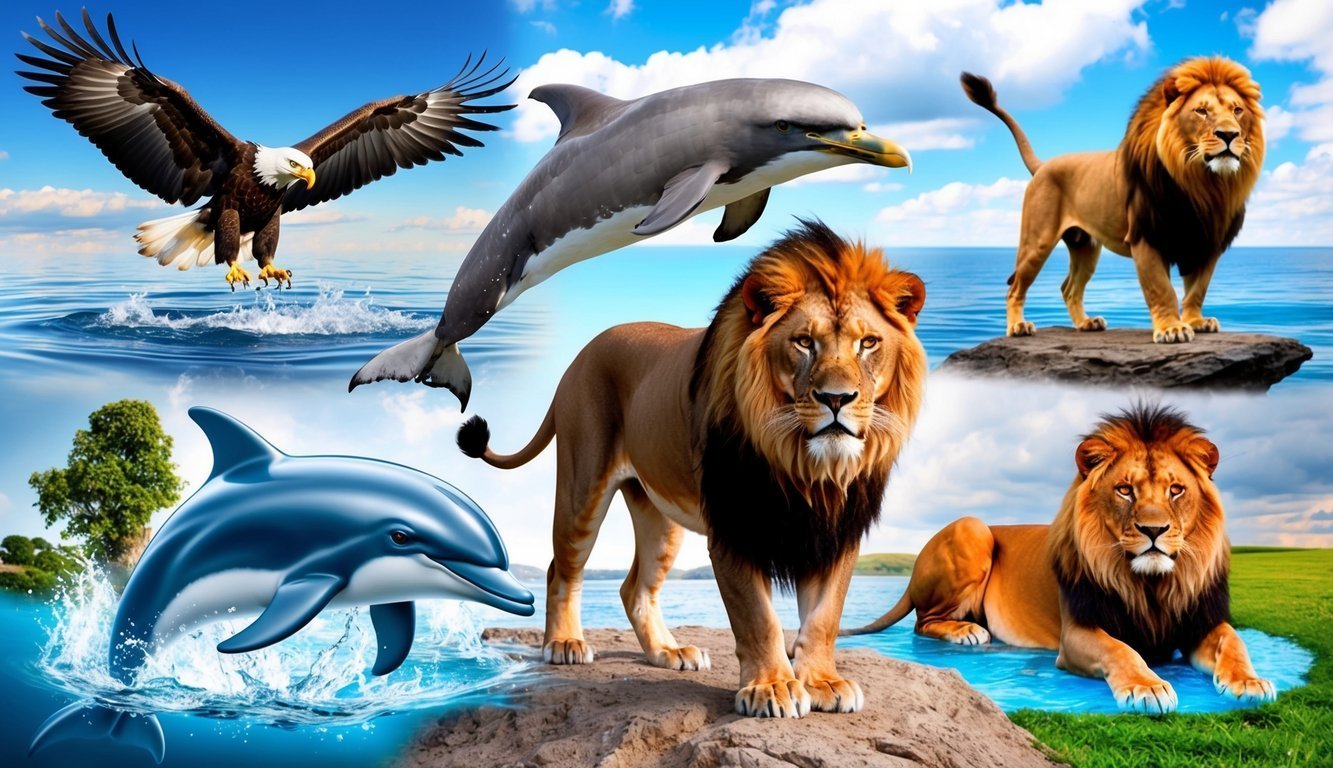
Spirit animals hold a special meaning in many cultures. They are often seen as guides that represent various traits and characteristics, connecting people to nature and the elements.
This article explores 11 spirit animals that are specifically associated with the elements, revealing the unique qualities they embody.
Each element—earth, water, fire, and air—has its own symbolic creatures. Understanding these spirit animals can help individuals connect more deeply with their personal journey and the natural world around them.
Whether seeking strength, wisdom, or freedom, these animals provide valuable insights into one’s own spirit.

The phoenix is a well-known symbol of rebirth and transformation. This mythical bird is often associated with fire. It is said to rise from its ashes, representing new beginnings.
In many cultures, the phoenix symbolizes the cycle of life, death, and renewal. When the phoenix burns in flames, it signifies the end of one phase. Then, it is reborn, showcasing resilience and strength.
This bird’s connection to fire further highlights its passionate nature. Fire represents energy, change, and creativity. The phoenix embodies these traits as it embraces challenges and emerges stronger.
In Chinese mythology, the phoenix is linked to the south and summer. This adds to its reputation as a symbol of warmth and transformation. Many people see the phoenix as a guide for personal growth and overcoming obstacles.
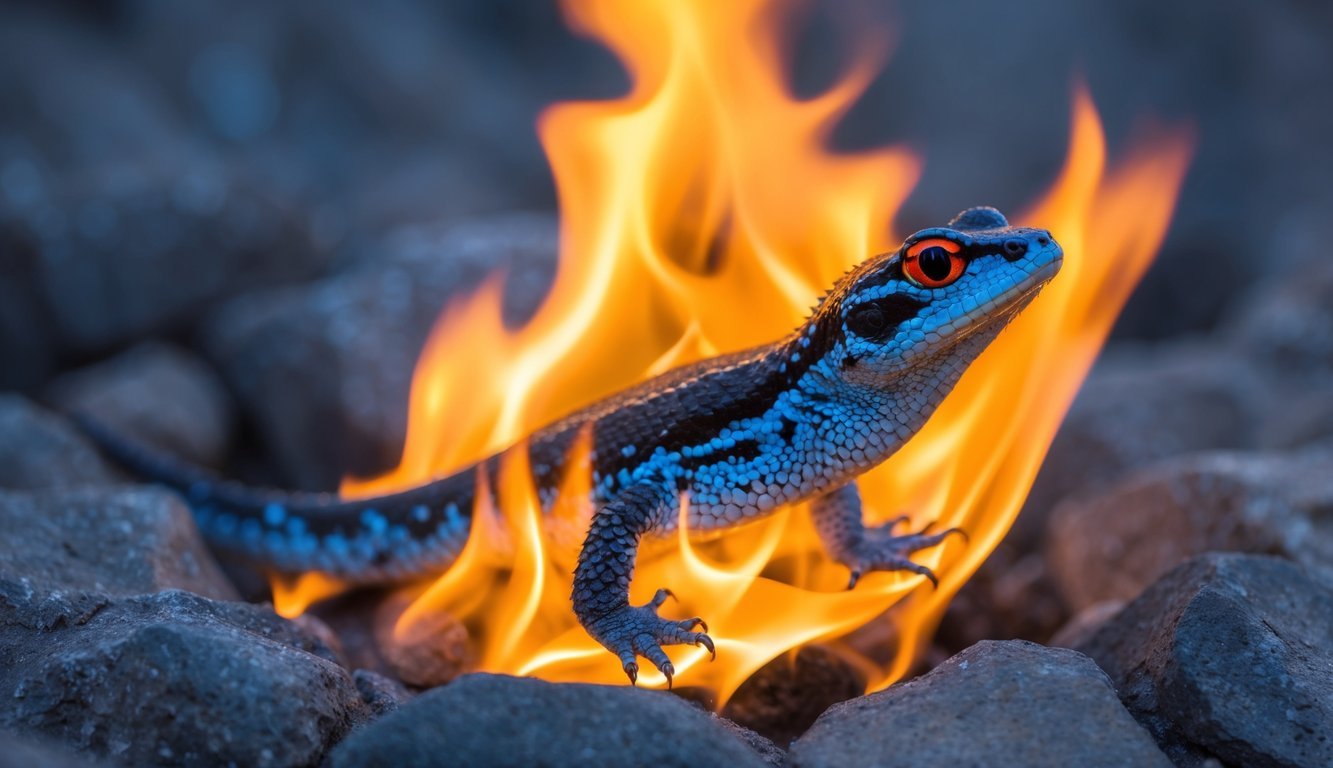
The salamander is a fascinating creature often linked to fire. Many cultures believe it can live in flames without harm. This unique connection makes it a strong symbol of endurance and transformation.
In various traditions, the salamander represents renewal and rebirth. Fire embodies strength and change, which matches the salamander’s spirit. It encourages individuals to embrace challenges and grow from them.
Native American cultures see the salamander as a balance between different forces, like water and fire. This duality highlights the importance of finding harmony in life. Recognizing the salamander’s ability to thrive in flames can inspire people to face their own difficulties with courage.

The lion is a symbol of strength and bravery. Known as the king of the jungle, it represents leadership and authority. This majestic animal embodies power in many cultures.
The lion is often linked to the element of fire. Fire symbolizes passion, energy, and transformation. When people think of the lion, they may think of its fierce spirit and confidence.
In ancient times, lions were associated with thunder and fire. They represented the raw energy and spirit needed to overcome challenges. This connection shows how lions inspire courage and determination in those who resonate with them.
People who identify with the lion spirit often find themselves drawn to leadership roles. They may approach life with a bold and fearless attitude, much like the lion itself. This connection to fire enhances their ability to face difficulties head-on.
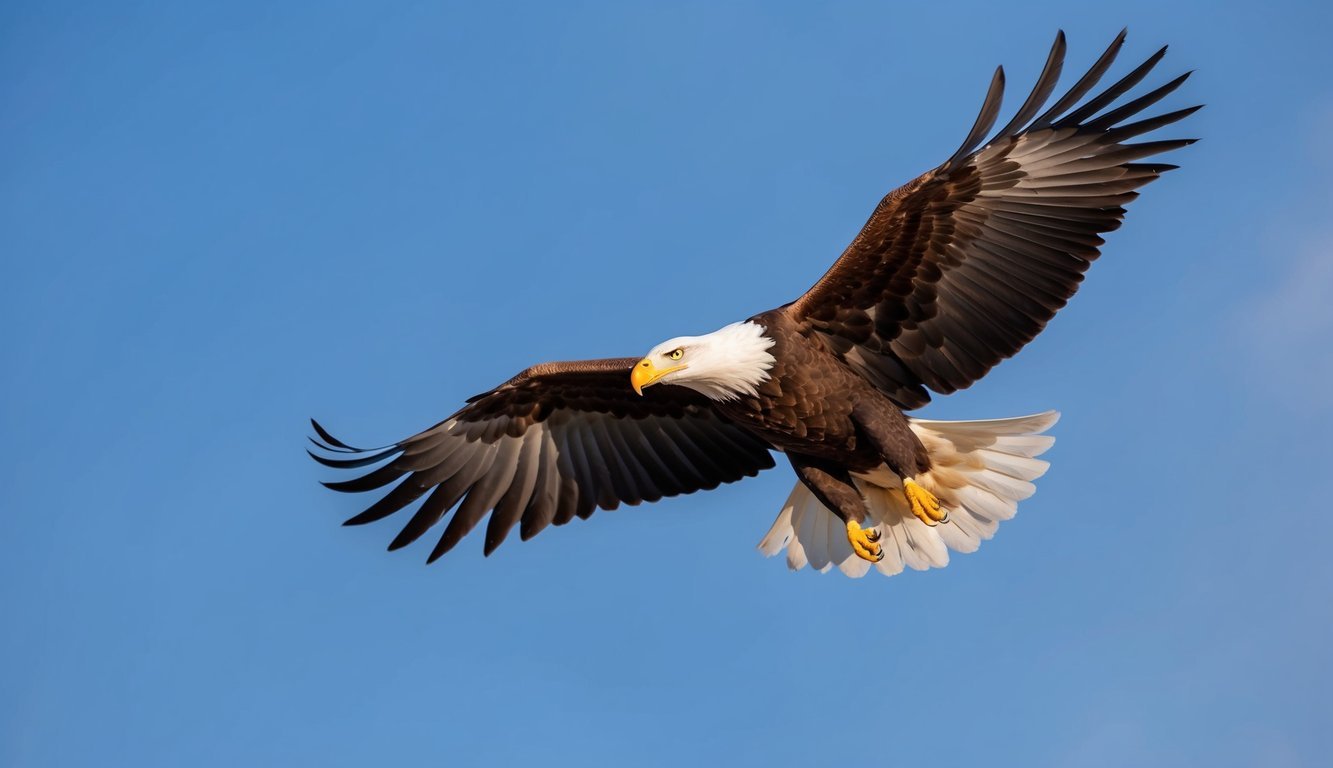
The eagle is a powerful symbol of air and freedom. It is known for soaring high in the sky, often above the clouds. This bird represents a sense of boundless freedom and exploration.
Eagles have sharp eyesight and the ability to see things from great distances. This clarity allows them to navigate their world with ease. They also embody strength and vision, which encourages people to rise above challenges.
In many cultures, the eagle is seen as a messenger of the divine. It connects the earthly realm to the spiritual. This connection inspires individuals to seek higher truths and deeper understanding in their lives.
The eagle’s flight is a reminder to embrace one’s own freedom. By soaring high like the eagle, people can pursue their dreams and aspirations. This spirit animal encourages a journey of discovery and enlightenment.

Sylphs are airy spirits often linked to the element of air. They are seen as light and ethereal beings that float and move gracefully through the skies. These spirits represent clarity, freedom, and creativity.
In mythology, sylphs are known to be invisible. They are described as delicate and elusive, with a nature that is both playful and mysterious.
These spirits are thought to embody the qualities of the air. They inspire thoughts and ideas, encouraging imagination and invention. People often associate sylphs with feelings of liberation and joy.
Sylphs do not have physical bodies but exist as lighter-than-air entities. They have long been part of stories about elemental beings, especially from the 16th century, when thinkers like Paracelsus wrote about them.
Those who connect with sylphs may feel a deeper link to nature and the sky. They serve as reminders of the importance of air, both for breathing and for inspiration.

The dolphin is a symbol of the water element. It is known for its playful and friendly nature. Dolphins are social animals, often seen swimming and playing in groups.
These creatures are intelligent and show deep emotional understanding. They connect well with their instincts, reminding us to trust our feelings. Their graceful movements in water are a testament to their fluid nature.
Dolphins encourage a sense of joy and lightness in life. They teach the importance of balance and harmony in both emotions and relationships. By embodying these traits, dolphins inspire people to embrace the fun and joyful side of life.
Overall, the dolphin serves as a reminder to approach challenges with grace and positivity. Its presence highlights the beauty of connecting with both oneself and others.
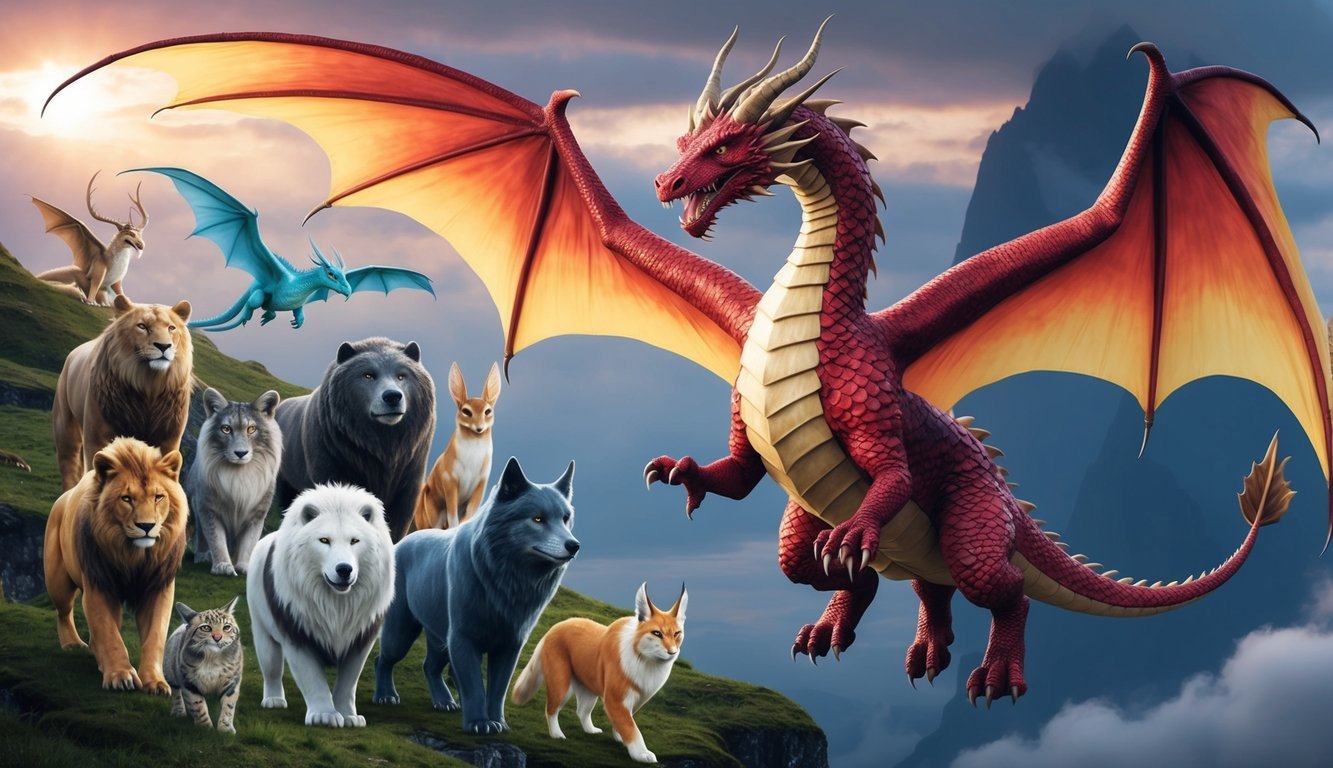
The dragon is a powerful spirit animal known for its majestic presence. It combines the qualities of fire and earth, symbolizing strength and transformation.
In many cultures, dragons are seen as guardians. They connect to the earth, representing stability and grounding energy. This connection offers wisdom and magic to those who seek it.
Dragons are also associated with fire, representing energy and passion. They inspire people to ignite their inner strength and embrace their true potential.
With their fierce nature, dragons encourage courage and leadership. This spirit animal reminds individuals to stand tall and face challenges head-on.
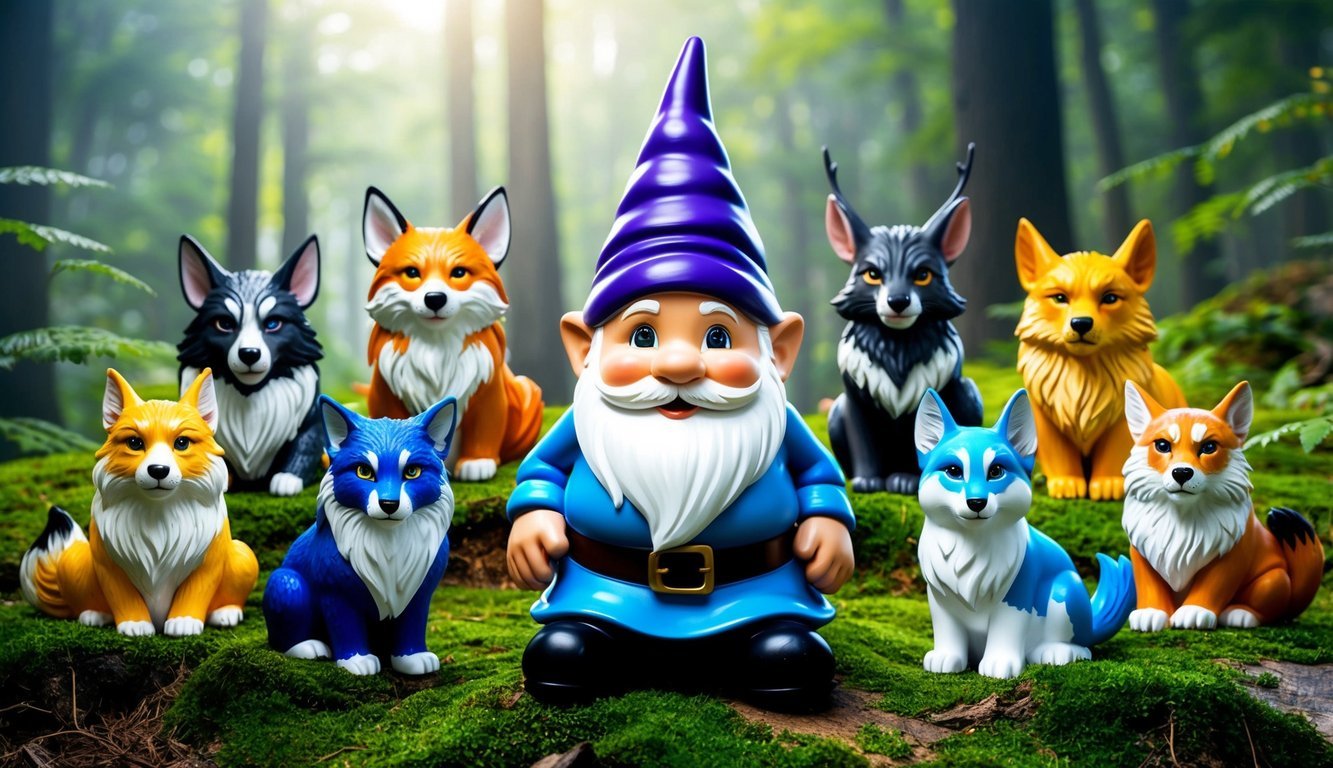
Gnomes are curious creatures from mythology. They are often seen as guardians of the earth. In Renaissance magic, Paracelsus introduced them as beings representing the earth element.
These small spirits are said to connect deeply with nature. They are often depicted as little humanoids who live underground. They might help plants grow and protect treasures hidden in the ground.
In many stories, gnomes are shown as earthy and practical. Their colors are usually green, symbolizing their bond with the earth. Unlike many other mythical beings, gnomes are not able to fly, making their connection to the ground even stronger.
Gnomes can be friendly and helpful but can also be shy. They are believed to dislike fire, which can harm them. This makes their home in earthy places much safer for them.
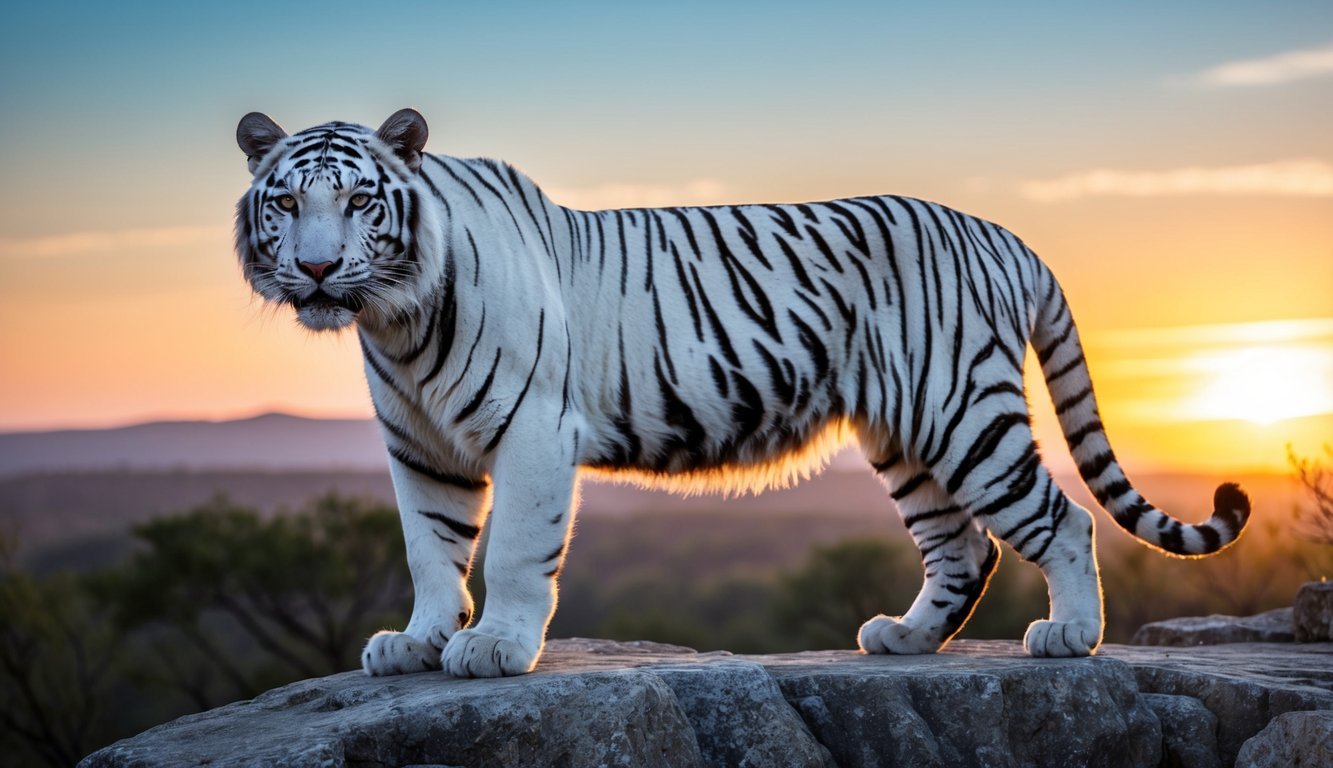
The White Tiger is known as the guardian of the west in various mythologies. It represents the autumn season and is linked to the metal element. This majestic creature is a symbol of bravery and defense.
In many cultures, the White Tiger is seen as a protector. People believe it offers luck and strength to those born under its sign. It is often viewed as a guardian spirit.
In Taoism, the White Tiger plays a significant role. It is one of the Four Symbols, which protect different directions. Each symbol has unique traits, and the White Tiger stands out for its connection to the metal element.
The White Tiger is also referred to by different names in several countries. In Japan, it is called Byakko, and in Korea, it is Baekho. In Vietnam, it is known as Bạch Hổ.
This spirit animal encourages bravery and a strong defense when facing challenges. Its presence is a reminder to stay courageous and grounded.

The Black Tortoise is an important symbol in Chinese mythology. It represents wisdom and longevity.
Connected to the water element, the Black Tortoise reflects calmness and adaptability. It is seen as a protector of the north and is related to the winter season.
This spirit animal embodies qualities like stability and endurance. People who resonate with the Black Tortoise may find comfort in quiet reflection.
In art, the Black Tortoise is often shown entwined with a snake. This connection suggests a balance between strength and fluidity.
Many view the Black Tortoise as a guide during tough times. Its presence encourages thoughtful decision-making and patience.

The Vermilion Bird is a powerful spirit animal in Chinese culture. It is a symbol of the fire element, making it vibrant and full of energy.
This bird represents the direction south and is linked to the warmth of summer. Its fiery nature conveys passion, transformation, and creativity.
In many stories, the Vermilion Bird is seen as a protector. It can bring protection against fire-based threats, making it a guardian for those who connect with its spirit.
This mystical creature encourages individuals to embrace their inner strength and warmth. Those who resonate with the Vermilion Bird often find themselves inspired by its boldness and vibrant energy.
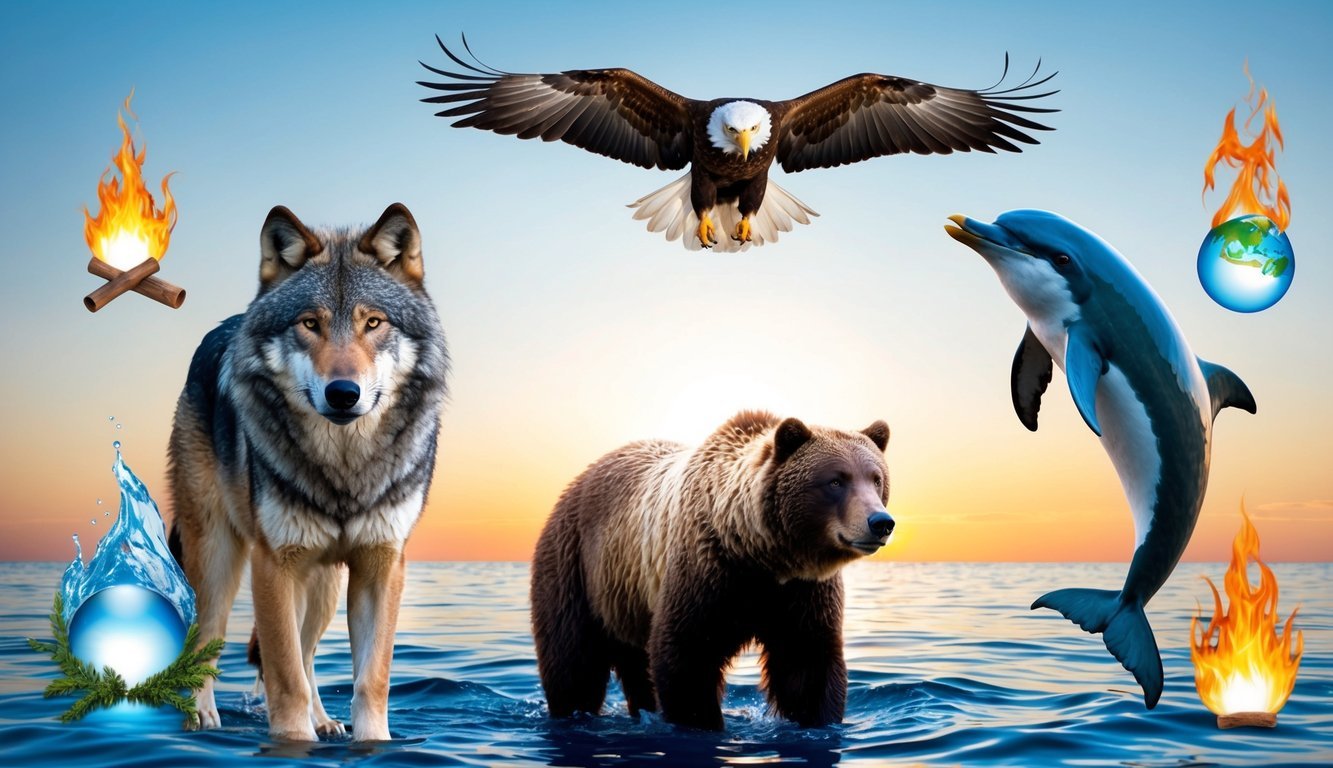
Spirit animals serve as important symbols that connect individuals with nature and the world around them. They reflect personal traits and values, helping people understand their inner selves.
Spirit animals are deeply tied to the natural world. Many cultures believe that these animals represent different elements, such as earth, water, fire, and air. Each spirit animal brings unique qualities related to its environment.
For example, the Wolf symbolizes loyalty and instinct, while the Eagle connects with freedom and vision.
This connection encourages individuals to observe and learn from the behaviors of these animals. By recognizing these traits, people can improve their own lives and make better decisions. Nature has much to teach, and spirit animals serve as guides in this journey.
Each spirit animal carries its own meaning. These meanings often align with human traits, emotions, and experiences. Here are some examples:
Understanding these symbols helps individuals relate their experiences to the characteristics of their spirit animals. This connection can be empowering and insightful. It can inspire personal growth and deeper self-awareness. By acknowledging the significance of their spirit animals, people can find guidance in their everyday lives.
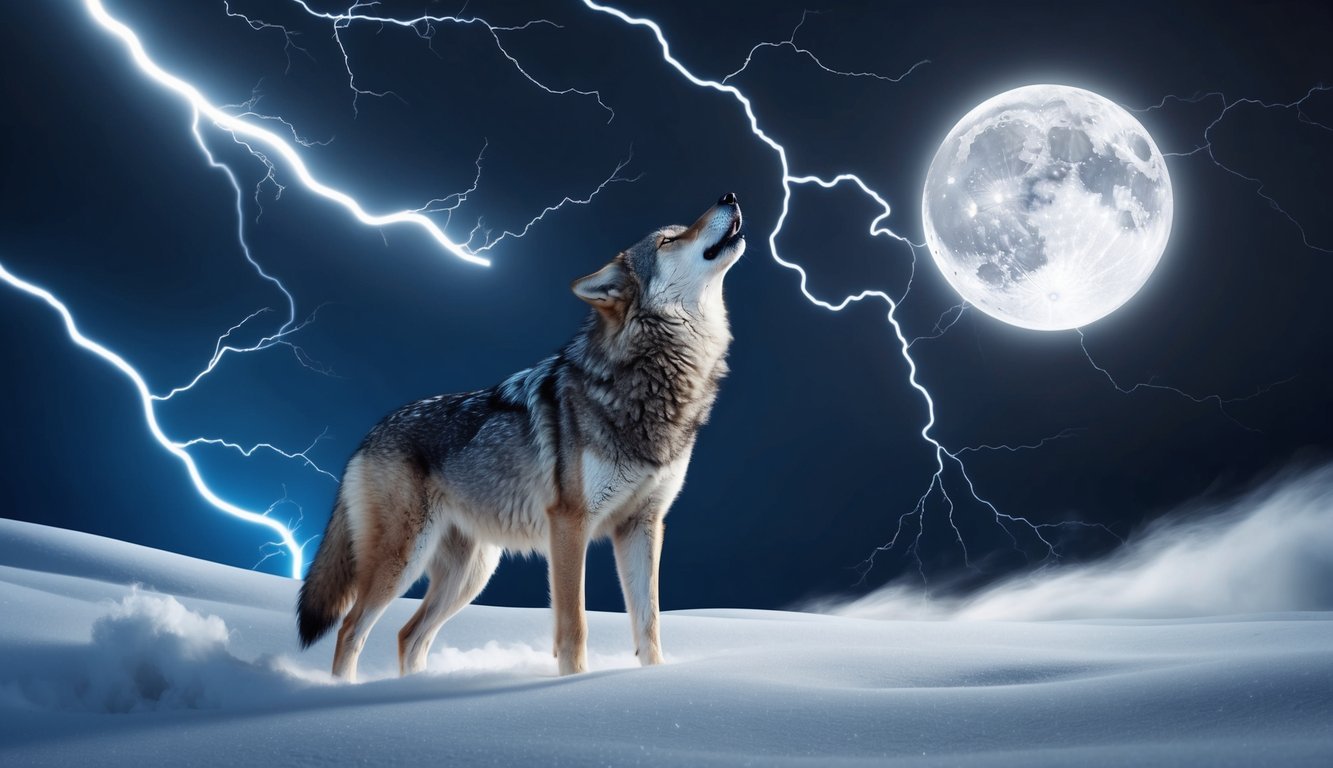
Understanding how spirit animals connect with the four elements—Earth, Air, Fire, and Water—offers insight into their deeper meanings. Each element influences the characteristics of its associated animals, providing guidance and wisdom.
Earth is connected to animals like the bear and the turtle. These creatures symbolize strength, stability, and grounding. They remind individuals to stay rooted and appreciate nature.
Air features animals such as the eagle and the owl. These animals represent knowledge, freedom, and intuition. They guide people in gaining clarity and perspective.
Fire is symbolized by animals like the phoenix and lion. These spirits embody passion, energy, and transformation. They encourage individuals to embrace change and take action.
Water includes animals such as the dolphin and the swan. These beings symbolize emotions, healing, and intuition. They remind people to trust their feelings and seek balance.
Spirit animals serve as guides throughout life. They provide wisdom and support in navigating challenges. Each spirit animal teaches important lessons related to its element.
For example, a person connected to an Earth spirit might focus on perseverance and strength. They may find comfort in nature and rely on stability during tough times.
In contrast, someone with an Air spirit might receive messages about communication and clarity. This awareness can lead to better decisions and personal growth.
Spirit animals also encourage individuals to embrace their unique qualities. Connecting with one’s spirit animal can enhance self-awareness and foster personal transformation.
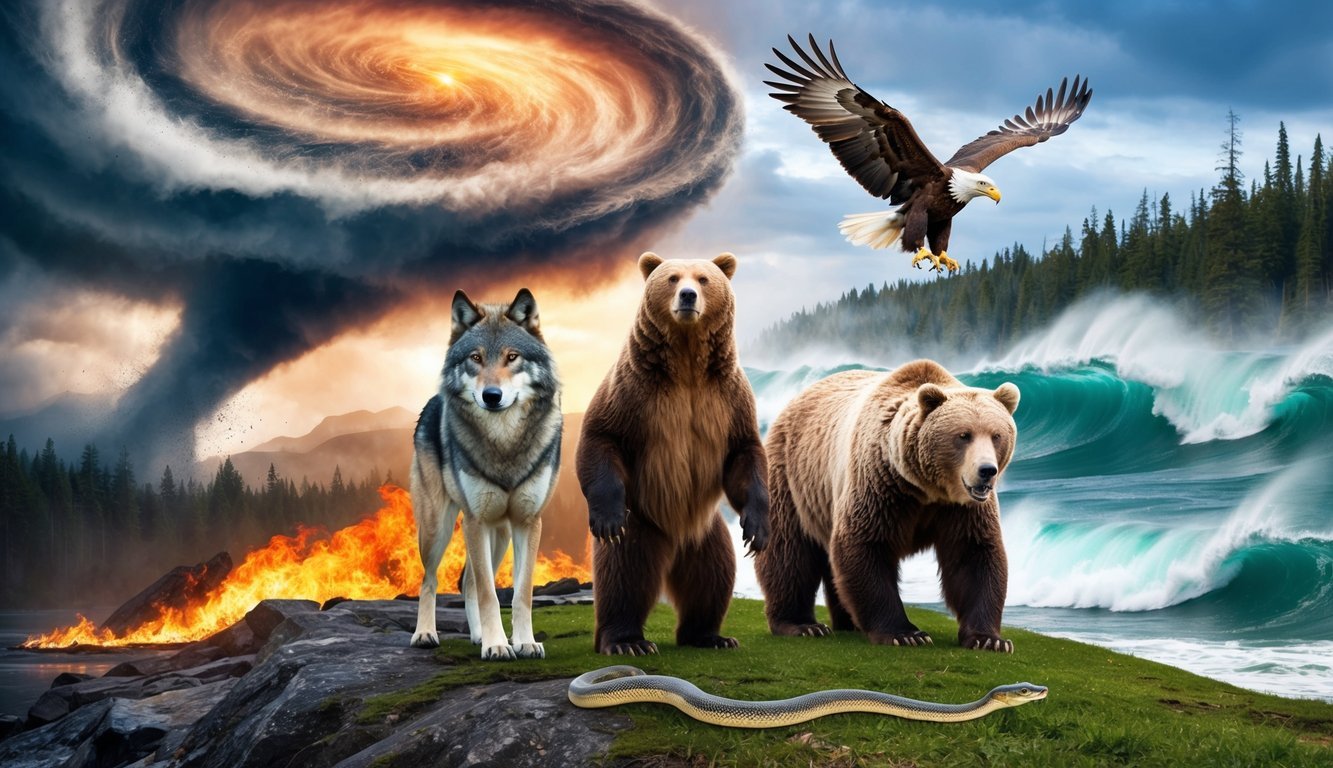
This section addresses common questions about spirit animals associated with the elements. It provides insights into different animals linked to water, earth, air, and fire, along with how to find a personal spirit animal.
Animals like dolphins, whales, and otters are often linked to the water element. Dolphins symbolize playfulness and intelligence, while whales represent depth and wisdom. Otters are seen as joyful creatures, reminding people to embrace fun and connection.
Earth-related animals include bears, elephants, and turtles. Bears symbolize strength and bravery, elephants represent memory and family ties, and turtles embody longevity and protection. These animals resonate with grounding and stability, reflecting nature’s nurturing aspects.
In many spiritual traditions, birds like eagles and hawks represent the air element. Eagles are associated with freedom, vision, and perspective, while hawks symbolize focus and intuition. These creatures inspire thoughts of soaring and embracing new opportunities.
In mythology, many creatures symbolize the four elements. For instance, dragons often symbolize fire, while mermaids represent water. Other animals include sylphs for air and gnomes for earth. Each creature embodies unique traits connected to their respective element.
To find a personal spirit animal, one can reflect on their experiences and feelings. Meditation and nature walks may help connect with the animal that resonates most. Personal traits and challenges can also guide someone to their spirit animal.
In folklore, the lion, wolf, and raven are often seen as powerful. The lion represents leadership and courage, the wolf embodies loyalty and teamwork, and the raven symbolizes intelligence and transformation. Each of these animals has a strong presence in various cultures.